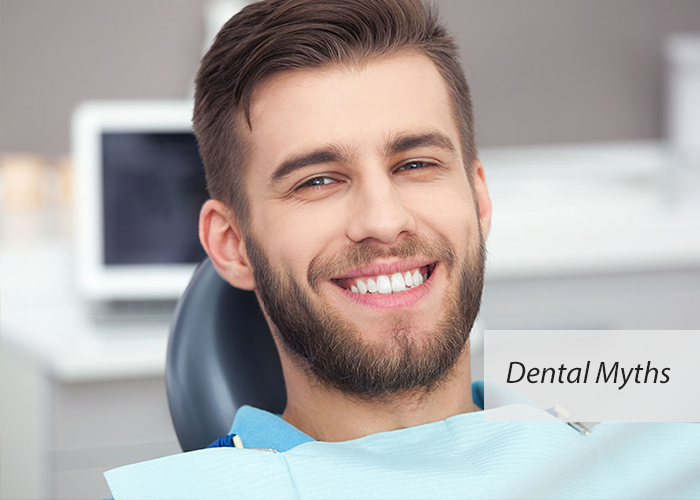10 Dental Myths, Debunked (Differentiating between facts and fiction)
Taking care of your teeth is as important as anything else. It is vital to follow good procedures and dental guidelines to achieve the optimal teeth health. However, while doing so, we must try to avoid receiving wisdom about dental health that is erroneous. When it comes to dental health, we must separate the truth and the facts from the false and the myths.
Myth 1:
Research has shown that flossing is not essential for good dental health
The fact:
The American government had recently parted ways with flossing as a formula for better oral health. They removed it as one of the dietary guidelines. The reason- they believe there is no sufficient evidence to support the hypothesis. The announcement has caused many people to think that flossing is not essential and they can dispense with as a means for better dental health. However, many dentists believe this will be a short-sighted approach. Most dentists still think that a regular flossing practice can lead to optimal dental health.
Myth 2:
When you brush and floss well, before meeting your dentist, it can overrule months of neglect
The fact:
Brushing and flossing before your dentist appointment will not hide the fact that you have not done it before the time. The dentist will see through the facade. The Tatars that form around the teeth when you refuse to brush and floss will not go out in just a few days. Some of these Tatars can even lead to inflammation. A few brushing and flossing will also not remove them. Deceiving your dentist is not an option.
Myth 3:
Chewing sugar-free gum is good for the teeth, they make brushing optional.
The fact:
Gums can be very good for the teeth and the mouth in general, when you have removed the sugary element. Gums without sugar can protect the teeth without the adds to the effect of sugar. Gums without sugar have been known to protect the teeth. Chewing gums promote saliva production, and as a result, they can help to wash away acids in foods and drinks that weaken the enamel.
This is especially true of gums that contain xylitol.
But the positive effects of gum do not make it a replacement for good brushing and flossing practices. Brushing two times a day with regular flossing cannot be replaced with sugar-free gums.
Myth 4:
When flossing leads to bleeding, stop it
The fact:
Flossing is not the cause of bleeding, Flossing only exposes the problem and seeks to eliminate it. Gum bleeding occurs when bacteria are allowed to remain on the teeth for a very long period. These bacteria tend to develop and prosper in those places where the toothbrushes do not reach. Once the bacteria develop, the gums experience inflammation, which leads to bleeding.
Bleeding during flossing, therefore, helps to expose what is already going on. What is needed, therefore, is not less flossing, but more flossing to remove the effects of the inflammation.
Myth 5:
Brush harder to get a cleaner teeth
The fact:
It is very natural to believe that the harder we brush, the cleaner the teeth. People from time immemorial have accepted this myth. What is unknown is that brushing hard can even lead to bad oral health. Hard brushing can damage the enamel, which is the most potent protective cover for the tooth crown. Even the gums can be affected, according to recent research.
A soft brush with toothpaste that is not too abrasive will get the job done better than a hard brush with abrasive toothpaste.
Myth 6:
Gum disease is only a mouth problem
The fact:
Gum disease might be an indicator of other worse conditions. Gum disease might be a symptom of other diseases like diabetes and high blood pressure. It may even be a symptom of cancer.
Myth 7:
Enamel loss is the cause of sensitive teeth
The fact:
Sensitive teeth can arise from many factors. When the enamel is weak, it may cause sensitive teeth, but sensitive teeth in itself are not evidence of enamel weakening. Sensitive teeth can result from whitening toothpaste. While the whitening toothpaste removes the stains on the teeth, it can cause sensitivity by penetrating through the enamel.
Gum recession can also cause sensitive teeth.
It is a myth to assume that sensitive teeth are equal to enamel weakening.
Myth 8:
Whiter teeth equals healthier teeth
The fact:
While most of the stuff that darkens the teeth are risk factors for deeper dental issues, that is not always the case. The teeth get darkened with age. Some drugs and certain foods and drinks can also darken the teeth without leaving any negative health consequences.
Myth 9:
Sugar is the primary risk factor for the development of cavities
The fact:
While sugar can be the important stuff that causes cavities, it is not the only stuff. Sweet and sticky substances cause cavities, but even things that are not so sweet can be risk factors. It is the presence of starch in carbohydrates that cause cavities, so, even crackers can be dangerous to the teeth, not merely sweets.
Myth 10:
If you have no dental problem, you don’t need to consult a dentist
The fact:
The most dangerous tooth diseases don’t even come with pain most of the times. The pain is evidence of a worsening situation. Gum diseases and cavities can conveniently be present in the teeth without any initial discomfort. Allowing it to progress to the level of painful sensations can be dangerous. At that point, it might need more serious dental processes for healing.
Therefore, a regular checkup should be scheduled with your dentist whether you feel like it or not, whether you are experiencing pain or not. You might just be saving your teeth and your health from some severe conditions.

